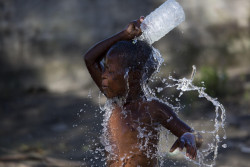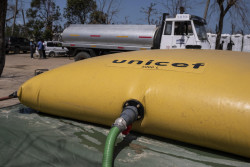

【2019年4月2日 東京発】
本資料は、日本時間2019年4月1日までに、ユニセフ(国連児童基金)現地事務所などから寄せられた報告を、日本ユニセフ協会広報室でまとめたものです。
* * *
 |
|
© UNICEF/UN0291858/Prinsloo |
|
被害を受けたベイラ市で、汚れた水で身体を洗う子ども。(2019年3月24日撮影) |
 |
|
© UNICEF/UN0294248/DE WET |
|
ユニセフは被災者が滞在するキャンプで安全な水を提供している。(2019年3月28日撮影) |
【関連ページ】
郵便局(ゆうちょ銀行)
振替口座:00190-5-31000
口座名義:公益財団法人 日本ユニセフ協会
*通信欄に「自然災害」と明記願います。
*窓口での振り込みの場合は、送金手数料が免除されます。
*公益財団法人 日本ユニセフ協会への寄付金には、特定公益増進法人への寄付として、所得税、相続税、法人税の税制上の優遇措置があります。また一部の自治体では、個人住民税の寄付金控除の対象となります。
シェアする